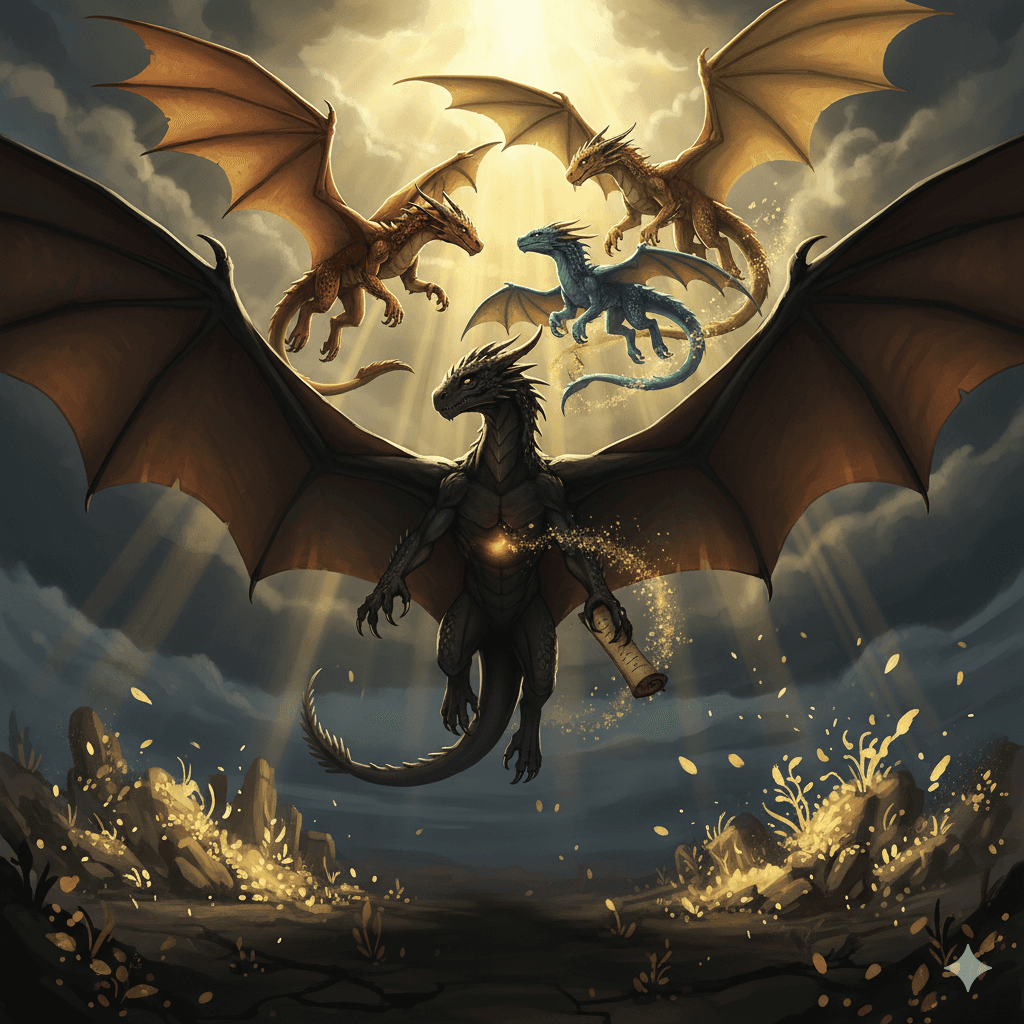Darkness Rising, Light Carried by Dragonets

Darkness will rise to bring the light. The dragonets are coming. - Tui T. Sutherland
Prophecy’s Productive Paradox
At the outset, the line “Darkness will rise to bring the light” frames turmoil as a catalyst rather than a mere threat. In prophetic storytelling, darkness often exposes what comfort obscures; upheaval forces hidden injustices and fragile alliances into view so they can be remade. This inversion echoes the literary motif of the fortunate fall—where loss or conflict opens the path to renewal. In Tui T. Sutherland’s world, the promise is not that darkness is good, but that confronting it becomes the crucible through which a better order is forged.
The Dragonets as a Turning Point
From there, “The dragonets are coming” names the agents of that renewal. In Wings of Fire: The Dragonet Prophecy (2012), five young dragons are foretold to end the SandWing succession war that has riven Pyrrhia. Their arrival carries both hope and destabilization; wherever they go, entrenched power must answer to a new moral measure. Sutherland makes the prophecy a public refrain within the story world, a slogan that motivates rebels, unnerves monarchs, and—crucially—burdens the dragonets themselves with expectations they scarcely understand.
Light and Dark in Shades of Gray
Moreover, the series resists neat binaries: light is not a single tribe, and darkness is not a single villain. Characters like Peril, lethal yet loyal, and Starflight, brilliant yet fearful, reveal that virtues and flaws intertwine. Even rulers such as Queen Scarlet are terrifying precisely because they mirror the societies that enable them. Meanwhile, Glory—a RainWing dismissed as lazy—emerges as resourceful and just (The Hidden Kingdom, 2013). Thus, the prophecy’s promise of light translates into moral complexity, not simplistic triumph.
Destiny, Detours, and Difficult Choices
In turn, Sutherland complicates fate by showing it warped in practice. The original SkyWing egg is destroyed; a RainWing, Glory, replaces it, instantly revising sacred expectations. Raised by the Talons of Peace for a destiny they didn’t choose, the dragonets soon defy their handlers and escape the cave, asserting agency (The Dragonet Prophecy, 2012). Their choices—whom to trust, when to fight, when to show mercy—repeatedly reshape what the prophecy can mean, suggesting that destiny offers a direction, not a script.
Collective Heroism Over a Lone Savior
Consequently, the light arrives not through a single chosen one but through teamwork. Clay’s empathy, Tsunami’s boldness, Glory’s ingenuity, Starflight’s knowledge, and Sunny’s optimism interlock to solve problems no individual could. Even their disagreements prove necessary, testing ideas before they harden into dogma. By distributing gifts and faults across five protagonists, Sutherland implies that sustainable peace is a collaborative craft—light becomes something shared, not wielded.
Why the Refrain Resonates
Ultimately, the quote captures why middle-grade epic fantasy endures: it affirms that young people can confront inherited darkness and still create something better. The promise that “the dragonets are coming” invites readers to imagine themselves as catalysts—imperfect yet indispensable. And because the story insists that illumination emerges through struggle, it offers a practical hope: change rarely arrives gently, but if we meet the rising dark together, we can turn it toward the light.